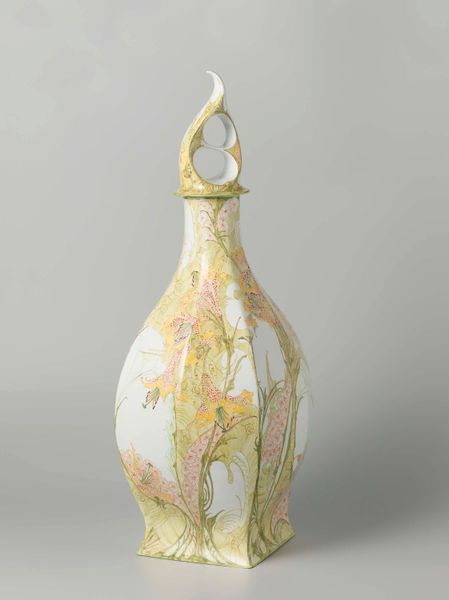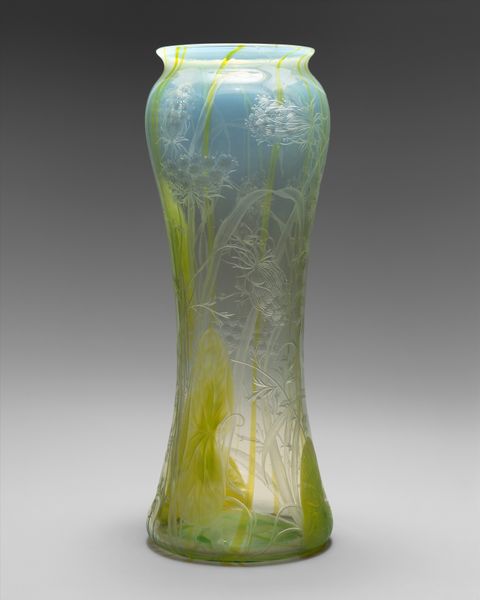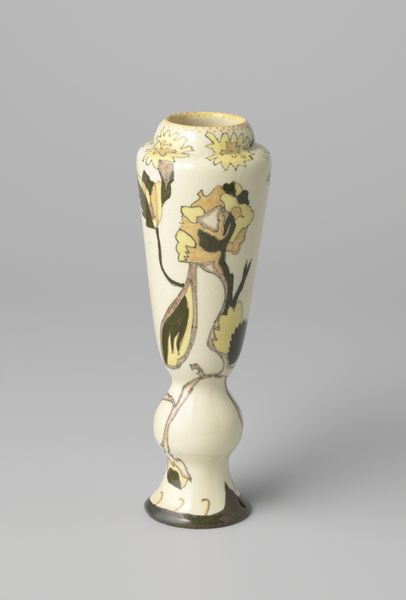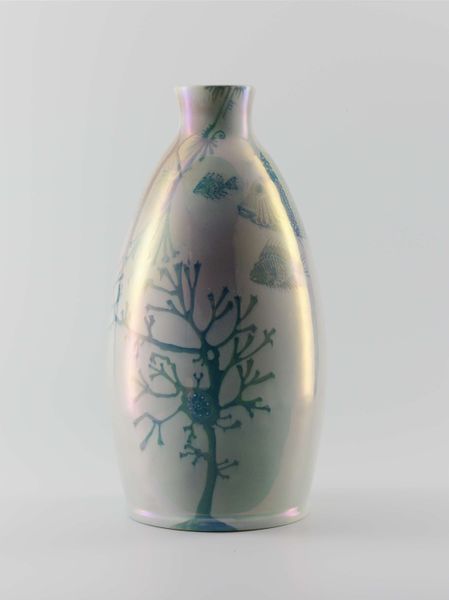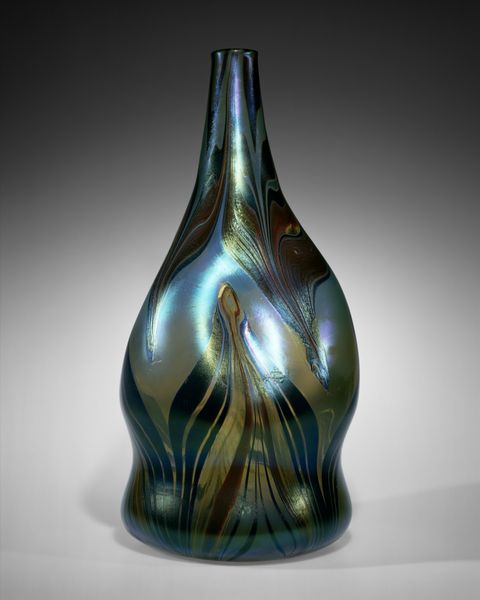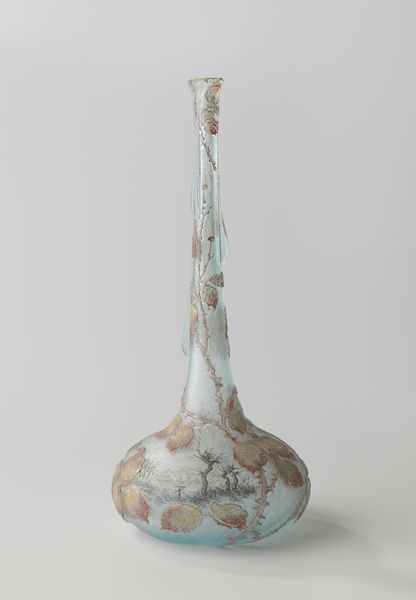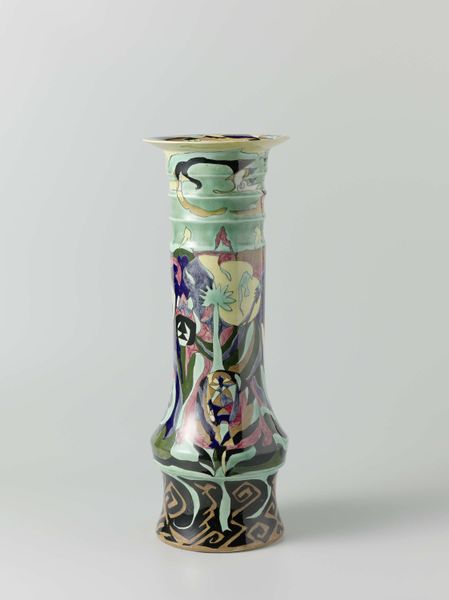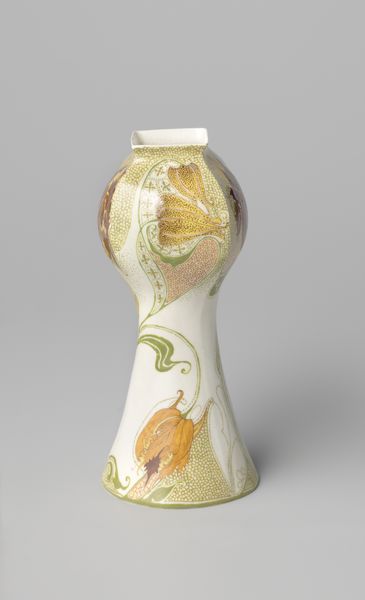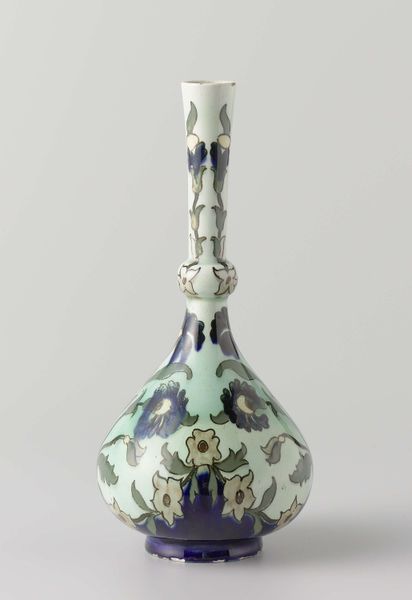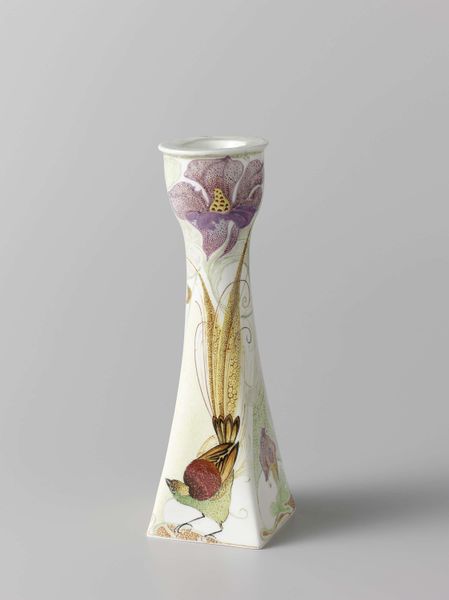
ceramic, earthenware
#
product photograph merchandise
#
advertising product shot
#
product studio photography
#
circular oval feature
#
art-nouveau
#
product fashion photography
#
ceramic
#
bird
#
round design
#
retro 'vintage design
#
earthenware
#
product design photgrpaphy
#
wash background
#
plant
#
metallic object render
Dimensions: height 32.0 cm, diameter 12.0 cm
Copyright: Rijks Museum: Open Domain
Editor: Here we have a piece titled "Vaas," made around 1900 by N.V. Haagsche Plateelfabriek Rozenburg, crafted from earthenware. The graceful form, combined with the delicate painting of birds and foliage, gives it an almost ethereal feel. How would you approach interpreting a work like this? Curator: Focusing on the material realities reveals interesting angles. Earthenware production at the turn of the century wasn’t just about aesthetics. It involved specific labor practices and material sourcing. Knowing that this piece comes from the Rozenburg factory allows us to examine its role in the burgeoning Dutch design industry at the time. How did Rozenburg's methods compare with more artisanal pottery making? Was there a tension between mass production and artistic expression at play here? Editor: That’s fascinating; I hadn't thought about it in terms of industrial production. It challenges the idea of the artist as a solitary genius, right? Curator: Exactly. And consider the Art Nouveau style itself. It aimed to elevate craft, blurring the lines between fine art and functional design. The consumption of luxury items like this vase fueled production and reflected social aspirations. Who was buying this vase, and what did it signify to them? Editor: So it's not just about the beautiful bird, but about the system that created it and the society it served? Curator: Precisely. Think about the glazes used, the firing techniques... these material elements tell a story of technological advancements and resource exploitation as well as aesthetic choices. The Rozenburg factory was innovative, patenting their eggshell porcelain that allowed them to create taller vases, decorated with incredibly intricate designs. They also ensured that these more decorative pieces were very limited, so were often very exclusive items. This piece, beautiful as it is, also offers insight into a network of labor, materials, and economic forces. Editor: That's really shifted my perspective. I'll never look at decorative art quite the same way again! Curator: The key is to consider the material and labor conditions of its production to better appreciate not only it's physical being, but the story of its journey into existence.
Comments
No comments
Be the first to comment and join the conversation on the ultimate creative platform.
